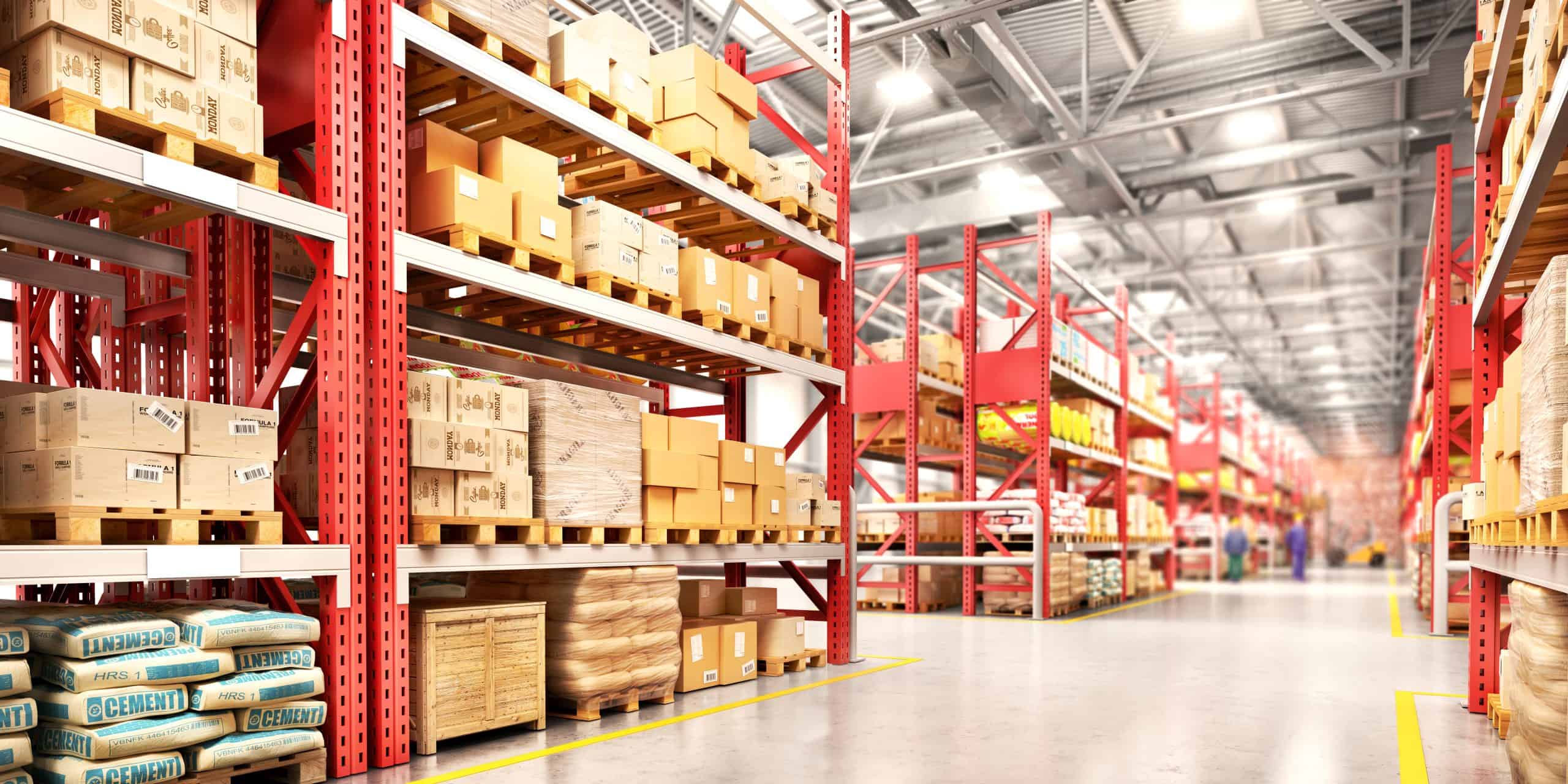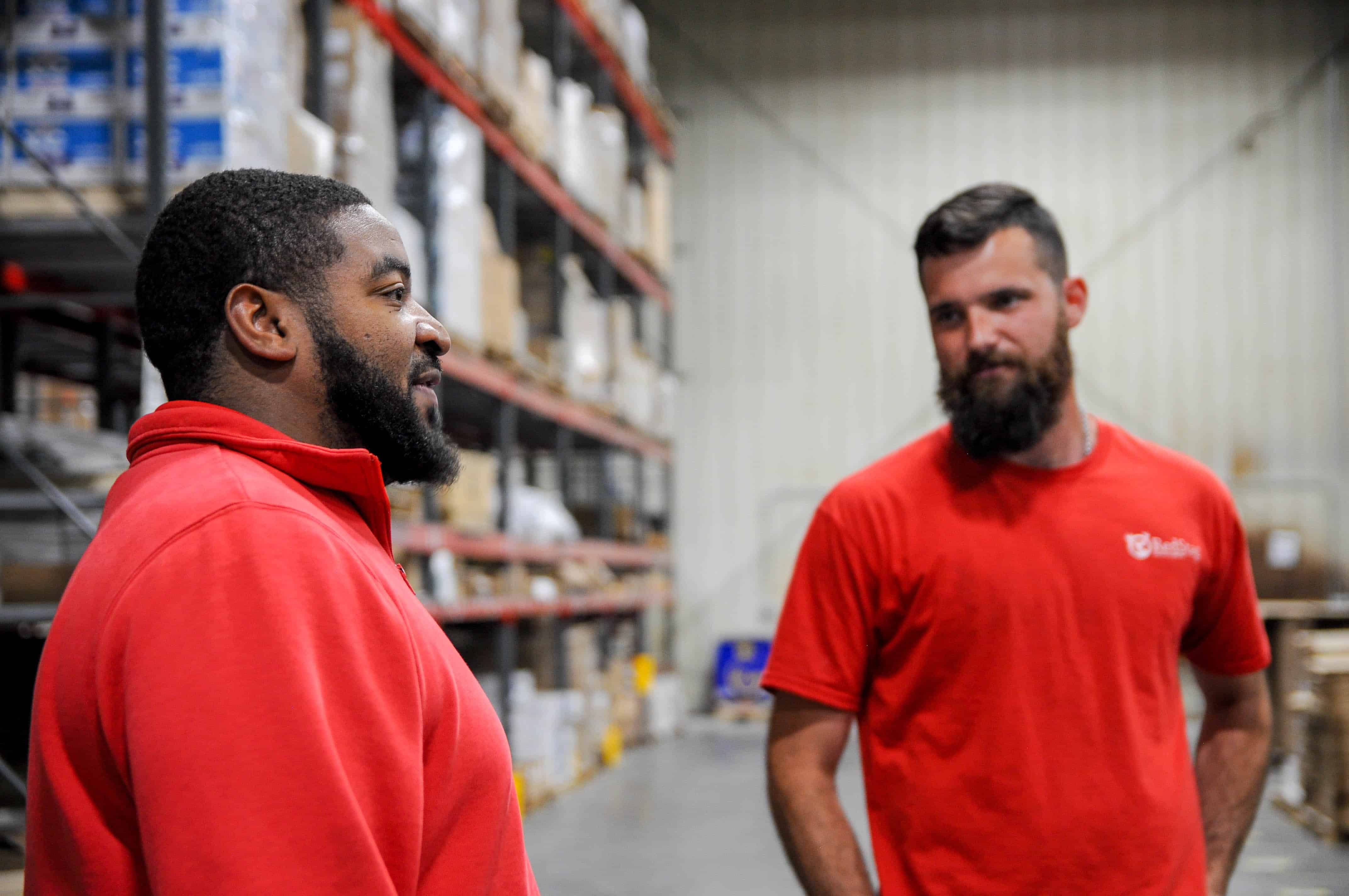If you sell products online, you need warehouse services for your ecommerce fulfillment. Sourcing the right warehouse services for your company can boost your profitability and customer satisfaction in real-time. Here’s the information you need to locate the optimal warehousing services for your business.
TL;DR:
Warehouse services essentials

Choose from private, public, bonded, distribution, fulfillment, or raw materials warehouses based on your needs.

3PL fulfillment services include storage, pick and pack, shipping, returns processing, cross-docking, and kitting.

Strategic warehouse locations can reduce delivery times and improve customer satisfaction.

Outsourcing to a quality 3PL can grow your eCommerce business without hiring additional staff.
What is a warehouse?
A warehouse is a building designed to store large quantities of merchandise — or wares, to use the Old English word.
Not all warehouses are alike. Some are open to the public, and some are not. Some offer logistics services, and some simply store goods. Here’s an overview of the types of warehouses.
Types of warehouses

Private warehouse. A warehouse owned and operated by a single company. Private warehouses can be distribution centers, fulfillment centers, or storage facilities.

Public warehouse. A public warehouse is a storage facility where you can rent space. The only warehouse service that public warehouses provide is storage space.

Bonded warehouse. Bonded warehouses hold imported goods before they clear customs.

Distribution warehouse. Distribution warehouses are waystations in the supply chain for wholesale goods. These distributors often aggregate stock from multiple suppliers to create wholesale deliveries for retail outlets.

Fulfillment warehouse. Also known as a 3PL or fulfillment center, fulfillment warehouses provide order fulfillment services for eCommerce companies.

Raw materials warehouse: focuses on the storing and transporting and delivery of the raw materials used to manufacture products to be sold.
Within each type of warehouse, there are also sub-types. For example, many fulfillment centers provide specialized services such as fulfillment for beauty products, cold storage, and shipping for perishable items, or fulfillment of oversized products.
PRO TIP: When selecting a warehouse type, consider your specific product requirements. If you sell oversized or heavy items, choose a 3PL like Red Stag Fulfillment that specializes in big and bulky fulfillment with appropriate handling equipment and expertise.

How are warehouse services different from third-party logistics?
Third-party logistics or 3PL services are one type of warehouse service. Fulfillment warehouses are 3PLs that provide a specific set of warehouse services.
Types of fulfillment warehouse services
Every fulfillment warehouse is different. Most provide essential fulfillment services, including picking, packing, shipping, and storage. Some 3PLs have additional offerings for their clients, including kitting, inventory management, and cross-docking.
Understanding what warehouse service providers are available and what to expect from a 3PL will help you develop a successful eCommerce fulfillment strategy.
Storage and warehousing
Storage is a basic service provided by every fulfillment warehouse. Demand forecasting and inventory management can help you run a lean supply chain with a minimal amount of stock. That will reduce your inventory and warehousing costs and improve turnover. Red Stag Fulfillment has implemented a cubic foot storage model to provide more accurate warehousing.

Pick and pack
Pick and pack is the process of picking items off the shelves from a pick list and packing them for shipping. Picking and packing are core fulfillment services.
NOTE: Accuracy in pick and pack operations is crucial for customer satisfaction. When evaluating 3PLs, ask about their error rates and accuracy guarantees. Top-tier providers like Red Stag Fulfillment maintain error rates below 0.02% and offer financial guarantees against picking mistakes.
Order fulfillment
Order fulfillment is all the steps needed to send out your orders. When your customer clicks the Buy button, your 3PL gets an electronic copy of the purchase, and the order processing begins. That initiates the pick and pack process. The final step in order fulfillment is handing the parcel to a carrier for delivery to your customer. That is also the final step in your supply chain.
Shipping
Most fulfillment warehouses work with the three major U.S. carriers: FedEx, UPS, and USPS. Red Stag Fulfillment offers flexible carrier selection, so you’re not locked into a single carrier for all your shipping. We find the carrier with the lowest rate and shortest delivery time for each order, saving you money and shortening your lead time.
Returns processing
Returns processing is also called reverse logistics. One of the decisions you will need to make is whether you want your 3PL to handle your reverse logistics or returns to come back to you directly. When Red Stag Fulfillment handles returns processing for our clients, we evaluate each item to determine whether it can be placed back into stock. We have the capacity to send clients photos of returns so that you can see the condition of the items.

Cross-docking
Cross-docking is a warehouse service that facilitates fast order fulfillment for backorders. Rather than processing an inbound shipment by putting items on shelves, Red Stag staff pull products from the receiving dock and label them for shipping. The products move directly from the receiving dock to the shipping dock, reducing the time it takes to fill backorders. We can turn around a whole container of backorders in a single day through cross-docking.
NOTE: Cross-docking can significantly reduce fulfillment time for backordered items. When choosing a 3PL, ask if they offer this service and how quickly they can process inbound shipments directly to outbound orders to minimize customer wait times.
Kitting and assembly
Kitting most often refers to pulling together multiple SKUs into a single new SKU to be sold together. Warehouse kitting can also involve pre-packaging items for safe shipping. Additional services, like kitting and assembly can also solve a manufacturing problem without the time and hassle of sending stock back to the factory. For example, a critical component was left out of the box for one of Red Stag’s clients. The factory shipped the missing product elements, and Red Stag added them to the boxes, so the products were ready to ship faster.
NOTE: Kitting services can create significant cost savings and efficiency in your supply chain. By bundling products together before shipping, you can reduce packaging materials, shipping costs, and processing time while offering customers convenient product combinations.
Warehouse locations
ECommerce companies can market to consumers anywhere and everywhere. However, the three most important things are still “location, location, location” when it comes to fulfillment. Siting doesn’t sound like a warehouse service, but it is. When you outsource your fulfillment, you can choose where to place your inventory.
There is a balance between the number of warehouse locations and inventory distribution. For example, Red Stag Fulfillment provides national fulfillment that reaches more than 99% of U.S. households in two days or less. And we do that with a minimal number of warehouse locations to simplify your inventory management system.

Inventory planning
Some 3PLs help clients with inventory planning. After all, your fulfillment company manages warehouses full of products, so they can share insights on best practices. At Red Stag Fulfillment, we believe our job is to help every client grow their business, and inventory planning (as well as inventory control) is just one part of that.
Palletized shipping
Fulfillment warehouse services can include not only order fulfillment but also bulk shipping using a pallet, or many pallets. Red Stag Fulfillment offers palletized shipping services for D2C delivery of oversized items and B2B bulk shipping. Palletized products typically ship via LTL freight.
Supply chain management assistance
Include your fulfillment partner in your supply chain planning. Your 3PL can help you find solutions for issues in other parts of the supply chain. Giving more supply chain visibility to your partners will improve your operations.
Key Takeaway: An experienced 3PL like Red Stag Fulfillment can provide valuable insights into your entire supply chain, helping you identify bottlenecks and implement solutions that improve efficiency across all operations, not just within the warehouse.
Expert fulfillment assistance
At Red Stag Fulfillment, we go out of our way to help our clients. Our team members are fulfillment professionals, so we can guarantee accurate warehouse services. In addition, we use that expertise to answer your questions and help you solve your fulfillment pain points.
How warehouse services can improve your eCommerce business
Getting warehouse services from a 3PL can help take your eCommerce business to the next level. You gain an experienced warehouse staff without hiring a single worker. Warehouse locations can reduce delivery times. And you might be surprised how affordable the pricing is for quality fulfillment services, especially once you factor in savings from reduced errors and returns.

Red Stag Fulfillment provides industry-leading warehousing and logistics
Red Stag Fulfillment has been named the best fulfillment company for high-value, large, and specialty products for the past six years. We provide top-notch warehouse services that add value to your fulfillment and special handling for delicate items.
If you’re ready to expand your eCommerce business, maybe it’s time to talk to Red Stag Fulfillment. We’re ready to help you grow.
What should I look for when choosing a warehouse service provider?
When selecting a warehouse service provider, look for accuracy guarantees, strategic locations that minimize shipping times to your customers, transparent pricing, specialized handling for your product type, and scalability to grow with your business. Also consider their technology integrations, inventory management capabilities, and customer service quality.
How can warehouse services reduce my eCommerce fulfillment costs?
Warehouse services can reduce fulfillment costs through economies of scale, optimized shipping rates, reduced error rates, efficient inventory management, and by eliminating the need for you to invest in warehouse space, equipment, and staff. Top 3PLs like Red Stag Fulfillment help further reduce costs by strategically placing inventory to minimize shipping zones and transit times to customers.
More about warehousing:
Ready to upgrade your warehouse services?
Connect with Red Stag Fulfillment to discover how our specialized warehouse services can help your eCommerce business grow while reducing costs and improving customer satisfaction.
Talk With Us





